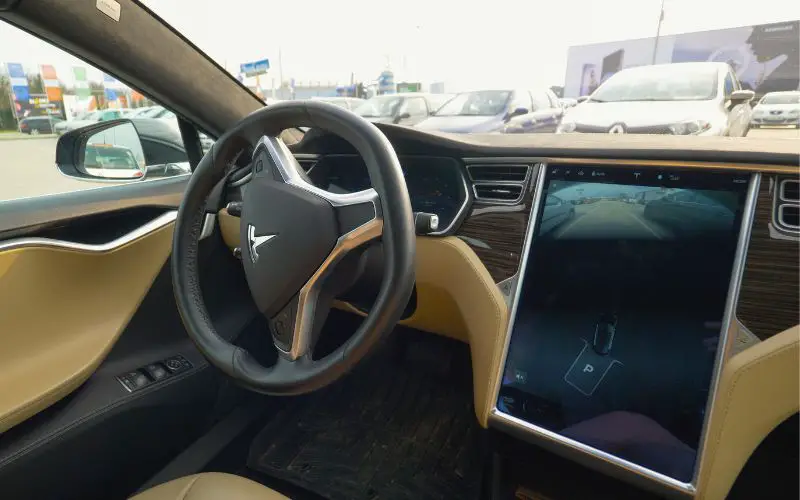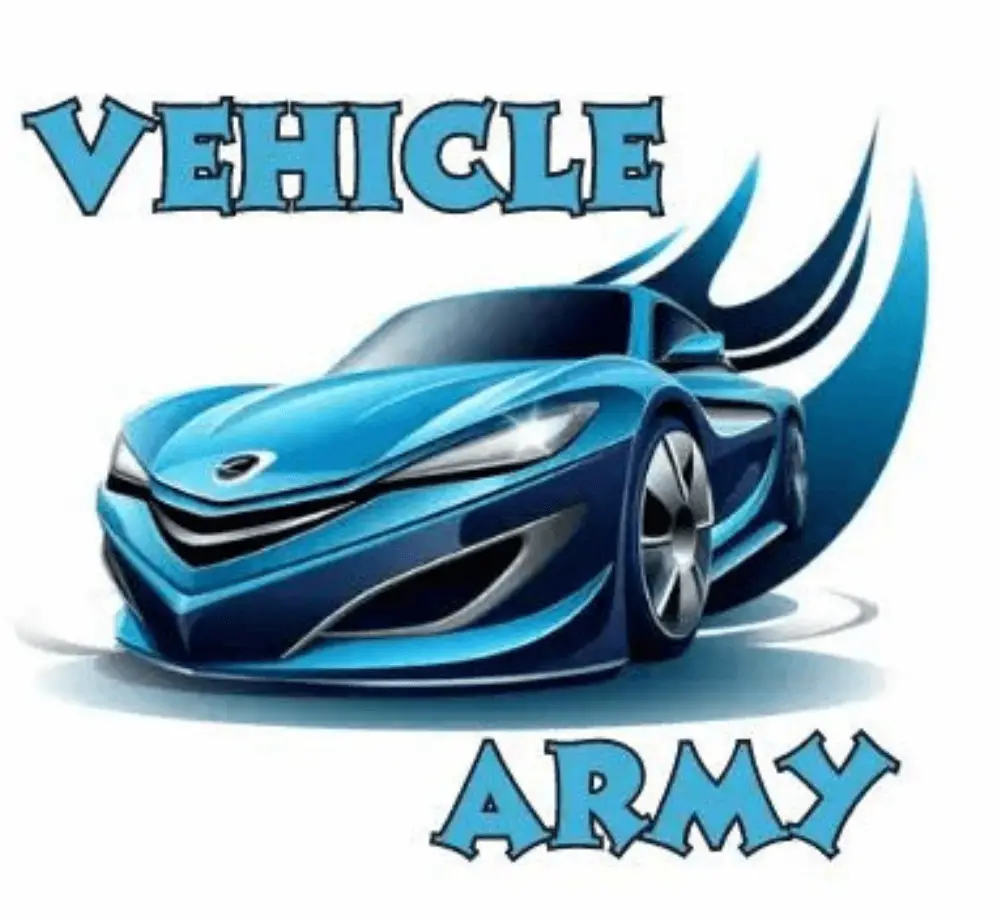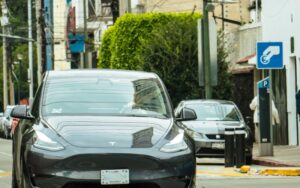13 Possible Reasons For Tesla Screen Not Turning On!
Last updated on September 12th, 2023 at 03:03 am
One of the few issues relating to Tesla is the screen needing to turn on.
It can be very frustrating, especially when you need it to perform certain functions like navigating or playing songs.
There are several reasons why your Tesla’s screen might not come on. Here are some reasons.
There could be several potential reasons why your Tesla screen is not turning on, including battery depletion, circuit problems, software glitches, disconnected cables, faulty display unit, electrical system malfunction, thermal shutdown, system update in progress, and much more. You’ll need to consult with Tesla customer service to resolve the issues.
This guide provides reasons and solutions to get your Tesla screen running at full optimal performance.
Let’s swoop in and restore your dashboard screen to its fully functional state!
Why is My Tesla Screen Not Turning On?

There are several reasons and causes for your Tesla screen not turning on. Some may be minor or major issues requiring little or no effort or expert hands.
Here are some reasons your Tesla screen won’t turn on:
#1. Water Lodge
Water in the internal component of the Tesla screen is quite a typical case for most Tesla owners who clean their screens with water.
It can expose your screen to short circuits, corrosion, and electrical connection faults, leading to failure in its display.
#2. Battery Depletion
One common reason your screen won’t turn on is when your Tesla battery needs more power. Ensure to charge the Tesla battery.
To charge the battery, connect to a charging source and allow it to charge sufficiently.
#3. Thermal Shutdown
The thermal shutdown happens when the car’s internal component overheats.
It can occur due to hot weather, extended use, and under-cooling, initiating a thermal shutdown. Once it shuts down, other car components, including the screen, go off.
However, when the temperature is moderate and suitable for the component to perform optimally, the power comes on, and so does the screen.
#4. Physical Damage
Sometimes, a direct impact can be made accidentally onto the screen, affecting functionality.
Direct impact on the screen may damage its internal components, crack it or fully damage the touchscreen’s responsiveness.
#5. Software Glitch
Sometimes, Tesla’s software experiences random software glitches that may also affect the screen and prevent it from turning on.
To fix it, find and press the scroll wheels on the steering till the Tesla logo comes on the screen. By doing so, the system will reboot, and the glitches will stop.
#6. Electrical System Malfunction or Fuse Problem
Occasionally, the Tesla screen may not come on due to a blown fuse or an electrical wiring fault. You can replace the fuse yourself if it is a blown fuse.
#7. A Faulty Display Unit
The screen may not turn on due to electrical malfunctions or failures.
When the display unit has issues, it may exhibit problems kike unresponsive touch inputs, flickering, or a blank screen.
These problems are usually underlying causes of a defective OLED panel or graphic processor and problems with the internal components of the Tesla.
#8. Loose or Disconnected Connections
Sometimes, loose connections might result in your Tesla’s screen not turning on.
These loose connections could come from the vehicle’s electrical wiring.
To resolve this problem, check for the cables and ensure they are properly secure. If there are any loose cables, carefully connect them.
#9. Hardware Failure
Hardware failure is a common problem regarding Tesla screens, as there may be malfunctioning in the hardware system.
Sometimes, due to hardware failure, replacing the screen is best.
#10. An Ongoing System Update
During a system update, it is usual for the Tesla screen to go off for a short time temporarily but eventually come on.
Once the system is updated, the screen automatically displays its regular interface.
If the screen doesn’t come on, it may be a problem that works and requires the expertise of Tesla support.
If your Tesla screen is not coming on, you can try the following to troubleshoot and potentially resolve the issue:
#11. Check the Power Source
Ensure that you change your Tesla vehicle sufficiently. If the battery isn’t full, the screen won’t come on.
#12. Check Cable Connections
Verify the cables behind the screen are securely connected because the screen won’t come on if they aren’t. If any connections are loose, carefully reattach them.
#13. Contact Tesla Support
If you need help with the troubleshooting tips, contact Tesla customer support or visit a Tesla service center for assistance and solutions.
How Do I Turn My Tesla Touchscreen Back on?
It would be best to turn on your Tesla screen for many reasons. If you want to turn on the screen, follow these steps:
Step 1
You’ll want to ensure your Tesla is not in motion and set to park mode.
Step 2
The next step is to press the brake pedal completely. It is a vital step to take when trying to alert the car’s internal system, including the touchscreen.
Step 3
The final step is to touch the screen. Touching it activates the screen and activates the Tesla’s display interface.
Why Is My Tesla Screen Not Turning On After a Reboot?
There are several reasons your Tesla screen doesn’t turn on after rebooting.
Here are some of them:
#1. Software Problems
If the screen doesn’t come on after rebooting, an underlying software issue may be causing it.
You can resolve this by updating the version of your Tesla software or taking a complete software reset.
Contact Tesla customer support or visit a Tesla service center for a complete reset,
#2. Hardware Problems
Your Tesla screen may not appear after a reboot implying a hardware problem.
A malfunction or component failure in the hardware system can prevent the screen from functioning at full optimal performance.
To resolve this problem, visit consultants with expertise in Tesla repairs.
#3. Power Supply Issue
The unresponsiveness from the screen after rebooting could be due to improper or faulty electrical wiring.
Some major causes of faulty wiring could be an electrical problem, a loose connection, or a blown fuse.
To resolve this issue, inspect the connections and fuse box behind the screen to ensure you place them correctly.
If you’re still getting familiar with the electrical, it’ll be best to talk with Tesla customer support or the service center for proper scrutiny.
#4. Touchscreen Failure
Sometimes, the screen itself may be experiencing problems that will not allow it to turn on.
One of the causes can be a hardware failure requiring the screen to be changed.
It is best to consult with the Tesla customer support center or visit any Tesla service center around you for expert testing and possible screen replacement.
How Do You Fix an Unresponsive Tesla Screen?
Sometimes, your Tesla screen can be unresponsive to touch and r inputs.
Here are some tips you can take to resolve the issue:
#1. Restart the Touchscreen
To restart the touchscreen, firmly press and hold the scroll wheels simultaneously on the steering wheel till the Tesla logo pops up on the screen.
Doing this can help resolve any momentary software hitches.
#2. Perform a Hard Reset
If restarting it didn’t work, you’ll want to try a more thorough approach, performing a hard reset.
To do this, press and hold the scroll wheel on the steering and the brake pedals simultaneously for up to 15 seconds until the screen goes off and the Tesla logo appears.
Performing a hard reset can help fix complex software glitches.
Most users don’t opt for this option because it has advantages and disadvantages.
The table below shows the pros and cons of performing a hard reset on a Tesla.
| Pros | Cons |
|---|---|
| Performing a hard reset can efficiently resolve any software glitches. | It may erase some personal configurations in the car. |
| Performing a hard reset improves the responsiveness. | It takes time to reset, restricting access to the car’s system. |
| Performing a hard reset enables Tesla to install new updates automatically. | As a user, you may need to recover essential data. |
If you have persistent issues with your Tesla and don’t want to perform a hard reset, it’s best to consult a Tesla customer center for more recommendations.
#3. Check for Tesla Updates
One of the reasons your Tesla screen may need to be more unresponsive is that your Tesla is running on an outdated software version.
Occasionally, Tesla provides provisional support for new software versions that every owner must run on.
So your Tesla vehicle must be running the latest software version.
To check for any available updates, Go to settings and check for “Software.” If there are any, follow the on-screen instructions to install it.
#4. Gently Clean the Screen
If there are any traces of fingerprints, dirt, or smudges on the touchscreen, it may cause it to be unresponsive.
Consider purchasing a lint-free or microfiber cloth and a screen cleaner to wipe off dirt on the screen and its corners.
#5. Charge the Battery
One common reason your Tesla screen may be unresponsive is the Tesla vehicle’s low battery.
You should ensure your Tesla car has enough battery charge at all times.
Additionally, always check the cables and connections behind the screen to ensure you plug them in correctly.
#6. Contact Tesla Customer Support
If the above steps fail to resolve the issues, then it is best to contact Tesla customer support.
Also, you can visit any Tesla service center around so they can offer assistance and provide recommendations and further diagnostics to fix the underlying issues.
Being careful while executing these troubleshooting steps is crucial, as the Tesla screen is quite sensitive. If you’re an amateur, visiting specialists with Tesla expertise is the best.
FAQs
Can I Replace a Faulty Tesla Screen?
Yes, you can replace a faulty or damaged Tesla screen.
What Should I Do If My Tesla Screen Lags and Is Unresponsive to Touch Inputs?
If your Tesla screen is unresponsive to touch inputs, you can restart the touchscreen by pressing and holding the steering wheel.
Can a Software Update Fix a Tesla Screen Not Turning On?
Yes, sometimes a software update can address bugs or glitches that may cause the screen not to turn on.

Hey, I’m Michael Davis, a 35-year-old with a degree and a love for cars and tech. Since I was a kid, cars have been my thing—so much that I even thought they ran on magic beans! Fast forward, and I’ve built Vehicle Army, your one-stop-shop for easy-to-understand car facts.







